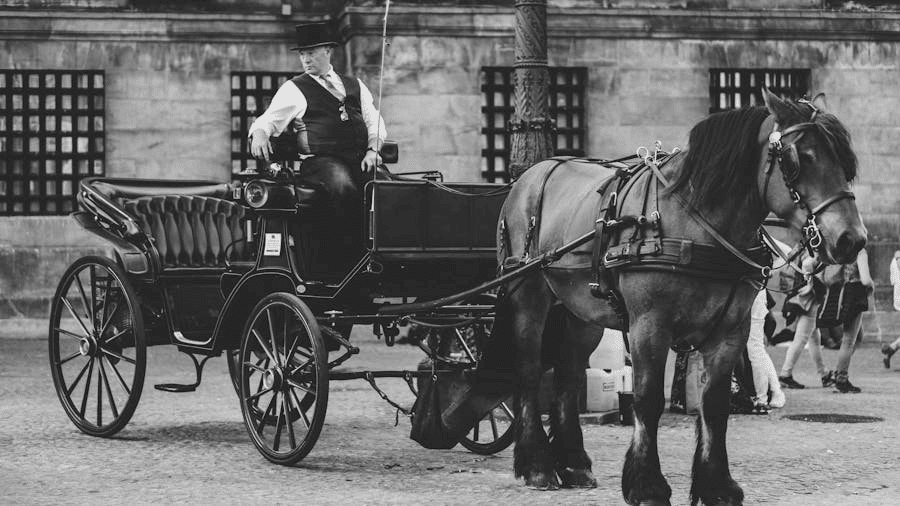📑Table of Contents:
Wagons have played a crucial role in transportation and logistics for centuries. Wagons have evolved significantly from humble beginnings as simple wooden carts to modern incarnations. This blog post explores wagons history, development, and also various uses, highlighting their impact on society and how they continue to serve us today. Join us on a journey through time as we delve into the world of wagons.

The Origins of Wagons
Wagons date back to ancient times, serving as essential tools for transporting goods and also people.
- Early Beginnings: The first wagons appeared around 3500 BC. These early vehicles were simple wooden structures with wheels made from solid wood discs.
- Horse-Drawn Innovation: By 2000 BC, the use of horses to pull wagons became widespread. This innovation significantly increased the speed and efficiency of transportation.
- Cultural Significance: Wagons were vital in various civilizations, including the Egyptians, Greeks, and Romans. They were used for trade, agriculture, and military purposes.
These early developments set the stage for the wagon’s evolution and impact on human progress.
The Rise of Covered Wagons
The 19th century saw covered wagons emerge, which became iconic symbols of westward expansion in the United States.
- Prairie Schooners: Covered wagons, also known as prairie schooners, were used by pioneers traveling westward. These wagons provided shelter and storage for long journeys.
- Design Features: They featured a canvas cover stretched over wooden hoops, protecting travelers and their belongings from the elements. Thus, the sturdy wooden frame and large wheels were designed to navigate rough terrains.
- Impact on Expansion: Covered wagons facilitated the migration of thousands of settlers, playing a crucial role in the development of the American West.
The covered wagon remains a symbol of exploration and the pioneering spirit of the 19th century.
Industrial Revolution and Technological Advancements

The Industrial Revolution also significantly changed wagon design and manufacturing, incorporating new materials and technologies.
- Steel and Iron: Steel and iron were used in wagon construction to improve durability and load capacity, allowing wagons to carry heavier loads over longer distances.
- Railroad Wagons: The advent of the railroad introduced specialized wagons for transporting goods. These rail wagons played a critical role in the growth of industries and commerce.
- Innovations in Design: Innovations such as the spring suspension system improved the comfort and stability of wagons, making them more efficient and versatile.
Technological advancements during the Industrial Revolution transformed wagons into more reliable and efficient vehicles.
Modern Wagons: Versatility and Adaptation
Moreover, wagons have adapted to modern needs today, evolving into various forms to serve different purposes.
- Station Wagons: “station wagon” refers to a car designed for passenger and cargo transport. These vehicles offer space and comfort, making them popular family cars.
- Utility Wagons: Utility wagons are designed for practical uses, such as gardening, camping, and transporting equipment. They come in various sizes and designs to meet specific needs.
- Recreational Wagons: Modern recreational wagons include collapsible frames and all-terrain wheels, making them ideal for outdoor activities and events.
The adaptability of wagons ensures their continued relevance in today’s world.
Cultural and Historical Impact
Wagons have left a lasting mark on culture and history, symbolizing various human development and progress aspects.
- Literature and Film: Wagons have been prominently featured in literature and film, often representing adventure, migration, and pioneering spirit. Iconic examples include “The Oregon Trail” and Western movies.
- Symbol of Innovation: The evolution of wagons reflects human ingenuity and the drive to improve transportation and logistics. They symbolize the progress of technology and society.
- Heritage and Preservation: Historical wagons are preserved in museums and heritage sites, serving as educational tools and cultural artifacts. They provide insights into past lifestyles and technological advancements.
Wagons continue to be celebrated for their historical and cultural significance.
Future of Wagons
As technology advances, the future of wagons looks promising, with innovations and applications on the horizon.
- Electric and Autonomous Wagons: The development of electric and autonomous wagons could revolutionize transportation, offering environmentally friendly and efficient cargo and passenger transport solutions.
- Smart Technology: Integration of smart technology, such as GPS and IoT, can enhance the functionality and efficiency of modern wagons. These advancements will make wagons more user-friendly and versatile.
- Sustainable Materials: Using sustainable and lightweight materials in wagon construction will reduce environmental impact and improve performance.
Technological advancements and a growing emphasis on sustainability will shape the future of wagons.

Conclusion
The journey of wagons from ancient wooden carts to modern marvels is a testament to human innovation and adaptability. Wagons have been pivotal in transportation, trade, and cultural development. As we look to the future, wagons will continue to evolve, integrating new technologies and materials to meet society’s changing needs. The legacy of wagons is a remarkable story of progress, resilience, and enduring utility.
Wagons have been essential to human history, reflecting our ability to innovate and adapt. From ancient times to modern-day applications, they have continually evolved to meet our needs. As we embrace new technologies and sustainable practices, the wagon will remain a symbol of our journey through time, embodying the spirit of exploration and progress. Whether used for practical purposes or cherished as cultural artifacts, wagons will always hold a special place in our hearts and history.





